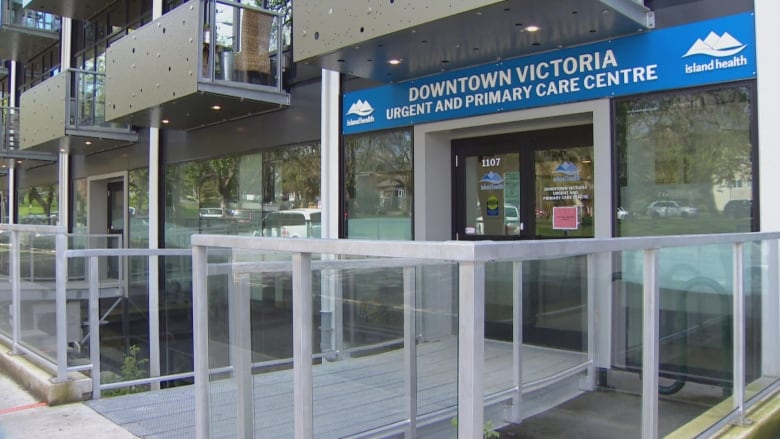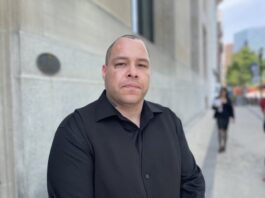
Camille Currie has less than a year of battery life on her pacemaker and no family doctor.
The Greater Victoria resident and mother of two says she also has bleeding and connective-tissue disorders that would make post-op care challenging when she does get the battery replaced. If she has trouble healing, she is afraid she will have to line up at an urgent and primary care centre (UPCC).
Currie also says both her children have a rare auto-inflammatory disorder.
Yet she and her family are among almost a million British Columbians without a family doctor. According to the B.C. College of Family Physicians, only 80 per cent of residents in the Capital Regional District have one, compared to 84 per cent of people provincewide.
According to Canadian tech company Medimap, which publishes online wait-times for walk-in clinics, B.C. residents wait an average of 58 minutes at walk-in clinics — more than double the national average. Victoria had the longest average wait time in the country at more than 2½ hours.
CBC spoke to patients, doctors and other people impacted by the shortage for a special series titled “A Crisis in Care: The Family Doctor Shortage in Greater Victoria” to examine the roots of the problem, and one issue that came up multiple times was B.C.’s fee-for-service system.
Current system leading to doctor burnout
Fee-for-service is a system of care that pays doctors for each office visit.
People familiar with how it works say the high volume of administrative work needed for doctors to get payment — combined with the low amount of take-home pay it generates — is discouraging doctors from practising family medicine, and that’s created a dire need for family physicians and a reliance on emergency rooms and clinics.
“B.C. is not providing us with universal health care,” said Currie on CBC’s All Points West on Tuesday.

11:12A Crisis in Care: Consequences for patients when family practices close
Camille Currie is one of thousands of people who lost their family doctor when two physicians left the Eagle Creek Clinic in View Royal. The experience prompted her to become and advocate and create the BC Health Care Matters Facebook page and website. She spoke with Robyn Burns. 11:12
Greater Victoria physician Jennifer Lush is trying, though.
Lush has been a family doctor for 20 years and understands why others would choose not to be. Most doctors are paid about $30 per patient visit and, from that, Lush pays for staff, medical equipment and office space.
She says she works 70-hour weeks and struggles with work-life balance.
Half the hours Lush puts in are unpaid, she says, because they are spent doing paperwork.
“The minute my kids are tucked in bed, I’m pulling out my computer and I start charting. Often I will chart until two or three in the morning,” Lush told CBC’s On The Island on Tuesday.
It is possible in BC, but only if the family doc works for free. Now if the govt would pay the doctor for all work done, after hours included, it would be one step to attracting docs back into family medicine. <a href=”https://t.co/hjJ537BYuY”>https://t.co/hjJ537BYuY</a>
—@DrJLush
Comparable to minimum wage
A report published in the Canadian Family Physician Journal in November 2021 found up-and-coming doctors are choosing more hospital-based work and specialized practice rather than family medicine — in part because they’re worried about the consequences of B.C.’s fee-for-service model on work-life balance.
Alicia Pawluk became a doctor in 2018 and does hospital-based work alongside treating patients at the Cool Aid Community Health Centre in Victoria.
She says under the current system, the take-home income of a family doctor is comparable to minimum wage.
“The average physician graduates with about $200,000 of debt. Minimum wage is not going to be able to cover the sort of payments that we need to make,” said Pawluk.
In May 2020, the College of Family Physicians of Canada called for alternative funding models to replace the fee-for-service method in order to recruit and retain more family doctors.
B.C. Health Minister Adrian Dix said connecting people with a family doctor has been his “highest priority” since entering the role in 2017.
To reduce the administrative burden on doctors, and help people who don’t have one, Dix’s ministry invested in UPCCs to provide same-day, urgent, non-emergency support. He said the province is also increasing the use of alternative payment methods to attract more family physicians.
“The will of doctors and others to work with us to reform and make the system better is there, and we need to do so,” Dix told CBC’s On The Island on Thursday.
On The Island11:21Today we kick off our series “A Crisis in Care – the Family Doctor Shortage in Greater Victoria”. This morning we will hear why family doctors are walking away from private practise in our community.
Gregor Craigie spoke with by CBC story producer Jean Paetkau about the challenges of being a family doctor under the fee-for-service system. 11:21
‘I did not receive that care until too late’
Change can’t come soon enough for Joy Williamson, who has been without a doctor for eight years. Diagnosed with breast cancer in 2020, she believes it would have been caught sooner if she had had one.
“I did not receive that care until too late,” said Williamson, who explained that the cancer had travelled to her lymph nodes by the time it was detected and she needed to have her whole breast removed instead of a lumpectomy.

The day before her surgery, Williamson was worried she had a blood infection and says she drove around Greater Victoria with her husband and two kids for hours looking for a UPCC that was not full. She ended up waiting five hours in emergency for a diagnosis.
Currie hears how frustrating that is firsthand. She created B.C. Health Care Matters, a website where patients can petition for change and share their stories.
Those stories include parents who waited eight hours in emergency with sick kids, and a senior couple with mobility issues who lined up for hours, several days in a row, at a UPCC that was constantly full.
As time ticks closer to Currie’s own pending surgery, her own fear grows.
“This pacemaker is going to run out and I can only pray that I will be able to trust the system,” she said.












